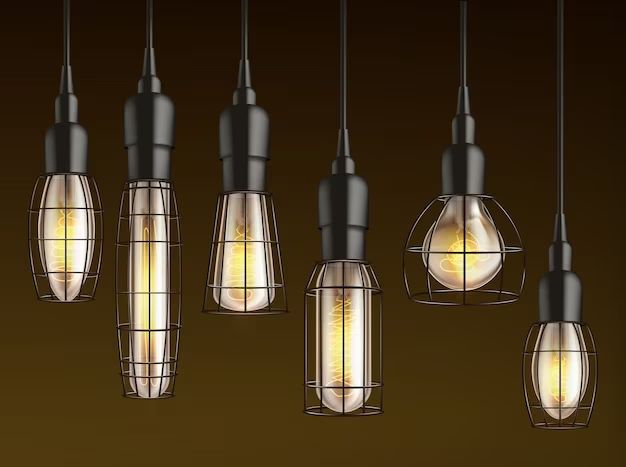When it comes to wiring exterior lights, choosing the right gauge wire is important for safety and performance. The gauge of wire refers to its thickness and determines how much electric current it can safely carry. Using wire that is too small can lead to overheating, voltage drops, flickering lights, and even fires.
Page Contents
Key Factors in Choosing Wire Gauge
There are a few key factors to consider when selecting the proper wire gauge for exterior lighting:
- Distance – The longer the wire run from the power source to the lights, the thicker the gauge needs to be to prevent voltage drop.
- Wattage – Higher wattage bulbs and fixtures require thicker wire to handle the increased electrical load.
- Number of lights – More lights on the same circuit means more current draw, necessitating a larger gauge.
- Material – Copper wire can safely carry more current than aluminum wire of the same gauge.
Recommended Wire Gauges for Exterior Lights
Here are some general recommendations for what gauge wire to use based on the type and number of exterior lights:
For low voltage lighting (12V):
- Single fixture – 18 gauge
- 2-4 fixtures – 16 gauge
- 5-8 fixtures – 14 gauge
- More than 8 fixtures – 12 gauge
For 120V lighting:
- Single bulb up to 60W – 16 gauge
- 60-100W bulbs – 14 gauge
- 100-150W bulbs – 12 gauge
- More than 150W – 10 gauge
These wire gauges account for voltage drop over 50-100 ft from the power source. For longer runs, go one size thicker.
Choosing Between Solid and Stranded Wire
Exterior lighting wire also comes in solid or stranded forms.
Solid wire has a single thick conductor and is stiffer, making it more difficult to work with. It’s best for permanent installations in conduit where the wire won’t be moved or flexed after installed.
Stranded wire is made of smaller wire bundles and is more flexible. It’s easier to work with and route through fixtures and junction boxes. Stranded is better for exposed outdoor runs or anywhere the wire may move frequently.
For most exterior light projects, stranded wire is preferable. The flexibility makes wiring connections simpler.
Wire Color Coding
Using proper wire color coding is required by electrical code for safety. Here are the standard wire colors:
- White – Neutral
- Black – Hot/Live
- Green or Bare – Ground
- Red – Switched Hot for 3-way switch wiring
- Other colors – Extra hot wires in 240V circuits
Always connect the white neutral wires together in the light fixture and at all junctions. The bare copper or green ground wire connects to all metal fixtures for safety.
Outdoor Wiring Considerations
For exterior wiring, here are some other important factors to keep in mind:
- Use exterior-rated wire for all outdoor runs. This wire has UV-resistant insulation designed for outdoor exposure.
- Only use wiring approved for direct burial when running wire underground.
- Outdoor wire runs should be protected by conduit. PVC, liquidtight, or metal conduit improves protection.
- GFCI (ground fault circuit interrupter) outlets or breakers should be used for all outdoor receptacles and lights.
- Caulk around wires entering the back of outdoor fixtures to prevent water intrusion and corrosion.
- Allow slack in the wire lengths to prevent damage from pulls or strains.
Voltage Drop Considerations
When running long wire lengths from the power source to exterior lights, voltage drop becomes a concern. Voltage drop occurs as power is lost over long runs of wire, resulting in less voltage reaching the light fixture. The longer the run and smaller the wire gauge, the greater the voltage drop.
Voltage drop causes lights to be dimmer and have less power. To minimize voltage drop:
- Use thicker wire gauges for longer runs – Increase wire size if over 50 ft from the power source.
- Limit the number of fixtures on a run – Have no more than 10-12 low voltage lights on a single run.
- Use lower wattage bulbs – Choose LED or CFL bulbs that use less energy.
- Install fixtures closer to the power source whenever possible.
Keeping voltage drop under 3% is ideal for optimal light performance.
Wiring Exterior Lights Step-by-Step
Follow these steps to wire exterior lighting fixtures safely and correctly:
- Turn off power – Shut off electricity at the main breaker panel before working on any wiring.
- Choose wire gauge and type – Select the proper size and stranding based on wattage, distance, and number of lights.
- Run wire – Route the exterior-rated wire either through conduit or underground in an approved direct burial application.
- Prepare light fixtures – Make wire connections or splice points accessible within fixtures for the new wiring.
- Connect wires – Use approved connectors to join the wires between fixtures properly matching hot, neutral, and ground.
- Secure wires – Use staples or wire clips to safely secure long wire runs to building structures or framing.
- Install fixtures – Mount the exterior lighting fixtures based on product specifications and building codes for clearance.
- Weatherproof – Seal all connections and fixture openings with silicone, rubber gaskets, or other sealants to prevent moisture penetration.
- Test lights – Restore power and test that all fixtures work properly, troubleshooting any issues.
Consult a professional electrician if uncertain about any wiring steps. Following codes and best practices prevents electrical hazards.
Conclusion
Choosing the proper wire gauge helps ensure optimal safety, performance, and energy efficiency for exterior lighting projects. Considering the wattage demands, length of wire runs, voltage drop issues, and number of lights allows selecting the ideal wire size and type. Proper installation and weatherproofing also protects outdoor wiring from the elements. Follow local electrical codes for all exterior lighting wiring. When in doubt, consult a qualified electrician.
